Shep Hyken's Blog, page 63
June 1, 2022
Feedback Narcissism
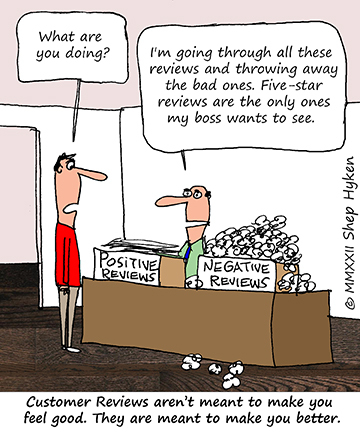 The word narcissism is seldom used in a positive way. Google narcissism and you find the definition from Oxford Languages is “an excessive interest in or admiration of oneself and one’s physical appearance.” In medical terms, the Mayo Clinic says a narcissistic personality disorder is a mental condition in which people have an inflated sense of their own importance, a deep need for excessive attention and admiration, and a lack of empathy for others. But behind this mask of extreme confidence lies a fragile self-esteem that’s vulnerable to the slightest criticism.
The word narcissism is seldom used in a positive way. Google narcissism and you find the definition from Oxford Languages is “an excessive interest in or admiration of oneself and one’s physical appearance.” In medical terms, the Mayo Clinic says a narcissistic personality disorder is a mental condition in which people have an inflated sense of their own importance, a deep need for excessive attention and admiration, and a lack of empathy for others. But behind this mask of extreme confidence lies a fragile self-esteem that’s vulnerable to the slightest criticism.
All of this leads to a conversation I had with my friend Tony Cheevers of Researchscape, who posted an article about Devora Rogers’s take on brand narcissism. As I read the article, I thought that another way to position this concept, as it applies to the customer experience, is something I now refer to as feedback narcissism.
Feedback narcissism is when a company – or employee in a company – is accumulating ratings and reviews to feel good about itself versus using the feedback to improve the experience for the customer. Yes, reviews can confirm if the company and its employees are doing a good job, and everyone can feel good about that, but that feedback, good or bad, is a powerful tool to help sustain a high level of customer experience or improve it if needed.
Feedback is a gift. Positive ratings may indicate you did a great job for the customer. Getting specifics as to why the customer left the high rating is just as important, if not more so. If you get a compliment or testimonial from a customer, is it something the company does all the time or was it a one-off experience? If it is a one-off, can it be operationalized to be repeated again and again? If the feedback is negative, what can be done to prevent or at least mitigate the problem from happening for future customers? The answers to these questions are why you want feedback. It’s not to inflate the ego.
I’ve written in the past about salespeople who beg for a perfect rating, claiming their livelihood depends on it. If it really does, they shouldn’t have to beg for a high rating. They should just deliver the experience that would cause the customer to want to leave a high rating. This really isn’t feedback narcissism, but it is close. It’s still asking for feedback for the wrong reason, doing nothing but serving the employees’ fear that they won’t look good to their boss.
I’m all for feeling good about the feedback you get from customers, but if that’s the only reason, stop it! Don’t fish for compliments. Fish for ways to make the customer experience better. Your customers will appreciate you for that and ideally reciprocate with more business and referrals. Now, that’s something to feel good about!
Shep Hyken is a customer service expert, keynote speaker, and New York Times, bestselling business author. For information on The Customer Focus customer service training programs, go to www.thecustomerfocus.com. Follow on Twitter: @Hyken
customer service training programs, go to www.thecustomerfocus.com. Follow on Twitter: @Hyken
The post Feedback Narcissism appeared first on Shep Hyken.
May 31, 2022
Amazing Business Radio: Jeffrey T. Mezger
 Building the Most Customer Obsessed Company On the Planet
Building the Most Customer Obsessed Company On the PlanetThere Is No Such Thing as Over-communicating With Your Customers
Shep Hyken interviews Jeffrey T. Mezger, Chairman, President and Chief Executive Officer at KB Home, one of the most recognized brands in homebuilding. They discuss the goal of being customer-obsessed, how your organization can provide an excellent experience in spite of supply chain issues and other problems, and more.






 Top Takeaways:Jeffrey Mezger’s mantra is to be the most customer-obsessed builder in the world. A lofty goal, but it is their “north star” and keeps everyone in alignment with its vision. If ever in doubt, he wants every employee to ask, “What would the most customer-obsessed company in the world do?”How do you deal with bad news? You have to over-communicate in every step. You can’t possibly communicate enough, especially if it involves a life-changing purchase.Economic conditions and supply chain issues disrupted customer service. When delays due to the supply disruption happen, take it up another level and make sure to communicate even more.The more you communicate with your customer, even if it’s about delays or bad news, they feel like they have control because they have a piece of knowledge.How do you ensure that you stay on top? You can never stop raising the bar, always aiming for a higher target by listening to what your customers want along the way.A customer-obsessed organization starts with knowing what the customer wants and then partnering with them to achieve it. That’s a winning combination.Quotes:
Top Takeaways:Jeffrey Mezger’s mantra is to be the most customer-obsessed builder in the world. A lofty goal, but it is their “north star” and keeps everyone in alignment with its vision. If ever in doubt, he wants every employee to ask, “What would the most customer-obsessed company in the world do?”How do you deal with bad news? You have to over-communicate in every step. You can’t possibly communicate enough, especially if it involves a life-changing purchase.Economic conditions and supply chain issues disrupted customer service. When delays due to the supply disruption happen, take it up another level and make sure to communicate even more.The more you communicate with your customer, even if it’s about delays or bad news, they feel like they have control because they have a piece of knowledge.How do you ensure that you stay on top? You can never stop raising the bar, always aiming for a higher target by listening to what your customers want along the way.A customer-obsessed organization starts with knowing what the customer wants and then partnering with them to achieve it. That’s a winning combination.Quotes:“Giving customers information is much more impactful and beneficial than saying nothing. Even if it’s something that is unpleasant, you have to talk to your customers.”
“When dealing with a customer, your team should ask, ‘What would the most customer-obsessed company in the world do?’”
“Customer satisfaction helps your business. It doesn’t cost you money, it makes you money.”
About:Jeffrey T. Mezger is the Chairman, President, and Chief Executive Officer at KB Home, one of the most recognized brands in homebuilding. Under his leadership, KB Home established itself as one of the most recognized brands in homebuilding.
Shep Hyken is a customer service and experience expert, New York Times bestselling author, award-winning keynote speaker, and your host of Amazing Business Radio.
This episode of Amazing Business Radio with Shep Hyken answers the following questions … and more:
How does supply chain management affect customer service?How do you handle delivering bad news?What is effective customer communication?How do you create a customer-obsessed culture?How should employees be trained to handle interactions with customers?The post Amazing Business Radio: Jeffrey T. Mezger appeared first on Shep Hyken.
May 30, 2022
5 Top Customer Service Articles of the Week 5-30-2022
Each week I read many customer service and customer experience articles from various resources. Here are my top five picks from last week. I have added my comment about each article and would like to hear what you think too.
This is Where Rewards Programs Lose Most of Their Members by Jenn McMillen(CustomerThink) Considering the cost of attracting new customers – one estimate is seven times more than keeping existing ones – many companies would do better to focus on retaining their engaged enrollees. Yet 44% of companies say they’re more keenly focused on customer acquisition and just 16% on retention.
My Comment: If you have a rewards program, is it working? If not, this article could shed some light on why. Here you will find some interesting stats and findings about why rewards programs fizzle out, the mistakes companies/brands make, and more.
The Verdict Is In: Customer Service Isn’t Human Enough by Amy Balliett(Inc. Magazine) Does your organization’s customer service strategy sacrifice humanity for the sake of efficiency? Here are three ways to adjust.
My Comment: We are in the digital era of customer service. So many questions, problems, and complaints are answered and resolved using a form of customer support other than the phone. But that doesn’t mean these digital options are the best. Our customer service research found that while 71% said they would use self-service tools, 65% still want to use the phone first. The best companies have found the balance between digital and human, as they realize there is still a significant desire for human-to-human customer support.
5 Strategies for Increasing Customer Retention by Andrian Valeanu(Designmodo) Businesses go to great lengths to earn customers’ loyalty, especially in this digital age. If you want your business to stand out from the competition, it’s crucial to take the necessary measures to ensure customers remain loyal.
My Comment: Who doesn’t want customers to come back? Customer retention happens for many different reasons from a great product, good prices, amazing service, and more. Here are five good reminders of how to get your customers to return. I’m partial to number four… Provide Exceptional Customer Service.
Poor Customer Service Is Strangling Business Growth by Iqra Ansari(The Drum) When we reflect on poor customer service, we often associate it with long wait times, inadequate staff and slow outcomes. But we fail to reflect on the marketing overpromises or products that have underdelivered in meeting customers’ expectations. Iqra Ansari, managing consultant at Frog, suggests rather than looking for someone to blame, it falls to the customer service teams.
My Comment: I’ve said this many times before, “Customer service doesn’t cost. It pays.” This short article emphasizes that poor customer service goes beyond the employees who deliver a less-than-stellar experience. Not investing in other areas of the company could be the cause. It could be systems, marketing messages that over-promise, lower quality products, and more.
The 360 Customer Experience Starts at the Hiring Process by Emily Washcovick(Yelp) Anyone who’s worked in or owned a restaurant knows it can be a demanding profession. Oftentimes, what keeps us engaged and happy to serve are the people working beside us.
My Comment: It doesn’t matter if it’s a restaurant, hotel, retail store, manufacturer, etc., etc., etc., if you want to deliver a great customer experience, you need good people. While the fourth on our list of articles this week emphasizes other reasons for a poor customer experience, this article focuses on people. Without the right people on the bus, all headed in the same direction, your customers could experience poor service. As the article states, it starts with culture… who you hire.
[image error]Shep Hyken is a customer service expert, professional speaker, and New York Times bestselling business author. Go to The Customer Focus to learn more about our customer service training programs. Follow on Twitter: @Hyken
to learn more about our customer service training programs. Follow on Twitter: @Hyken
The post 5 Top Customer Service Articles of the Week 5-30-2022 appeared first on Shep Hyken.
May 27, 2022
Guest Post: How to Boost Customer Support Employee Productivity for Better CX
This week, we feature an article by Sowmya Juttukonda, content developer & digital media specialist at Knowmax, a knowledge management system to enhance customer service. She shares how organizations can create an environment that motivates employees to become more productive and improve customer experience.
Talk of productivity, and we all have got something to share. Even on days that we are not working, we have this subtle question running in our minds- Was I productive today? This is because we have come a long way in our understanding of productivity which is no longer only about the amount of work but something more. This “something more” can extend to many different interpretations, but it is safe to bring out one common element- “Value.” We want to derive value from our work today, and when we do so, it naturally motivates us to do our jobs better.
Today, business leaders strive to understand their employees better and invest in strategies and solutions that augment their employee’s productivity to deliver valuable work. No wonder the workplace environment affects people’s levels of motivation and engagement with work, which is why businesses are opening up to reform their workplace culture and striving to make their company a happy place for people to work.
A sign of a highly productive organization would be its adequate attention and emphasis on catering to the needs of both its customers and employees. True that every business prioritizes customer happiness, and it should, but it invariably begins with your employees first. If employees are happy and look up to their workplace with regard and respect, it will be reflected in their interactions with customers.
Boosting the customer support employee productivityThe customer support employees are under constant pressure to deliver on time. Their performance and resourcefulness are marked by their ability to respond to situations with agility and ease. Given the demands on both the support quality and time that customer support teams are met with, it is natural for them to feel overwhelmed at work and dwell in the vicious cycle of low motivation levels leading to low productivity.
Dealing with customers is not easy. Besides, customer support employees cannot afford to act their frustration out on their work, for it can cost heavily to the company. As the bearers of great responsibilities, customer support representatives deserve timely care and attention. It is vital to ensure that their voices are heard and their challenges considered.
Here are some of the key ways you can take good care of your employees and motivate them to perform better at their jobs.
Automate customer service to prevent burnoutAccording to a Cornell University study, over 85% of call center employees report high-stress levels in their workplace. Back-to-back customer calls can exhaust support reps. Keeping in mind that some of these customers may be angry or frustrated, it is extremely challenging for agents to pull off their work satisfactorily. To some extent, stress can help employees achieve their targets, but all-time stress is debilitating for their mental health and robs them of their energy to work.
Given the ever-growing emphasis on sharing exceptional and seamless customer experiences, practical and viable solutions should be worked out instead of overburdening customer support employees with unrealistic goals.
Customer service automation is becoming the need of the hour. Intelligent virtual assistants or chatbots can be trained much more quickly than human employees and can offload their work. Everyone is bound to experience fatigue when they repeat the same tasks. Automating customer service with AI can eliminate redundancy and improve the ways customer support functions.
Benefits
With automation of routine customer queries, support reps can save time and invest in more skill-based work, directly leading to more valuable contributions & enhanced productivity Offloading repetitive and mundane tasks to bots takes care of the attrition rates by reducing the chances of employee burnout Eliminating the monotony motivates employees to focus on the strategic aspects of their job Focus on employee engagementAs the saying goes, No man is an island… No one can work in isolation, and healthy workplace culture is one where employees engage in meaningful interactions amongst themselves and with their supervisors. There needs to be a safe space for customer support employees to voice their concerns and share their challenges with the management. Customer satisfaction relies heavily on support agent satisfaction, making it all the more important for establishing robust communication strategies and plans in the organization.
A healthy balance can be created between creating individualized meet-ups and establishing standardized communication channels to interact with employees consistently and gain a deeper understanding of their problems at work. Most times, employees don’t feel safe about voicing their genuine concerns, which can be harmful in the long run.
In customer support, management needs to take feedback from support agents and consolidate it to optimize business processes. Data analytics and various technological tools can help businesses record user engagement patterns, learn from them, and find ways to solve challenges faced by customer support employees in dealing with customers.
Benefits
Tracking support teams’ experiences give insights into their unique challenges and provides space for improvement Engaging with customer support employees and taking their feedback makes them active participants in the mainline decision-making processes Establishing proper communication channels and encouraging employees’ voices motivates them to perform better Empower support teams with upgraded toolsAs discussed above, call center jobs are not easy and come with an aura of monotony, as many may look at it. However, technology is changing the ways call centers work. It is important not to get overwhelmed by the rapidly growing technological evolutions. The idea is to accept innovation with caution, keeping your unique business dynamics in mind.
Empowering customer support employees means giving them the right set of technology, information, and tools to confidently and effectively make decisions in real-time. As automated customer service can handle most standardized and routine customer problems, the nature of queries that come to agents via calls is complex.
Upgrading customer service tools can be a way forward to boost the productivity of support employees and make them independent problem solvers. When upgraded technology is aligned with human resources, customer support employee productivity levels rise to the next level as employees can unleash their full potential.
Benefits
The right set of customer service tools can better guide the agents with the interactive decision trees, helping them resolve the bulk of customer problems without getting overwhelmed Upgraded tools can make the call center talk scripts more structured and systematic, so employees can easily carry out their tasks When employees become independent problem solvers, they feel much more confident, which significantly enhances their productivity Unify information to save employees’ timeProductivity is directly dependent upon how people manage their time. Information overload is a growing challenge that absorbs much of our vital mental energy. Often, low productivity results from our hyperactive efforts to process information or a failure to locate it when needed.
In customer support, there is heavy reliance on knowledge resources. The inability to find the right information at the right time hits productivity levels directly, eventually leading to poor customer experiences. The key is to prevent the fragmentation of information and consolidate it in one place for employees to find the relevant information easily.
Benefits
With a unified knowledge base software for customer support, there are lesser chances of miscommunication between support teams and customers, improving the quality of customer service With a platform to rely on, employees can save considerable time they spend on locating information Employees do not have to pressure their heads with information, helping them stay energized to focus on work Final thoughtsEvery organization is bound to encounter low customer support employee productivity, and there is nothing wrong with that. However, what is wrong is to neglect the problem, for it can cost a loss of both money and trust. The solution is never to move away from the fundamental point, which is to take good care of your employees and encourage them to communicate about their problems which impact their productivity. When you identify the causes, take a sigh of relief because from there, you can begin to manage the situation effectively.
Take a comprehensive view of your business dynamics and implement proactive measures to help your employees perform to their full potential. Empowering your customer support employees with effective technological tools, knowledge, and resources can supercharge their efficiency and motivate them to deliver superior customer support.
Sowmya Juttukonda is a content developer & digital media specialist at Knowmax, a knowledge management solution for enterprises seeking to reduce their customer support costs & provide the same omnichannel customer experience throughout the customer journey.
 For more articles from Shep Hyken and his guest contributors go to customerserviceblog.com.
For more articles from Shep Hyken and his guest contributors go to customerserviceblog.com.
Read Shep’s latest Forbes article: Is Customer Loyalty Dead?
The post Guest Post: How to Boost Customer Support Employee Productivity for Better CX appeared first on Shep Hyken.
May 25, 2022
Is It Okay to Call a Customer or Employee Honey?
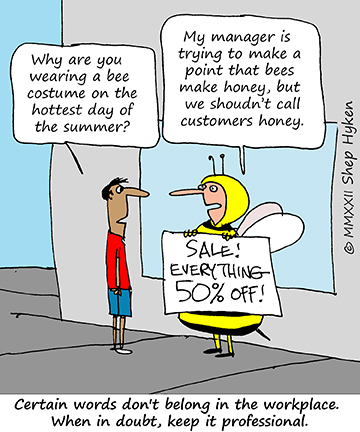 Just the other night, my wife and I joined some friends for a nice dinner. The server, who may still have been in high school, was taking our order. She looked at my wife and asked, “Honey, what would you like?”
Just the other night, my wife and I joined some friends for a nice dinner. The server, who may still have been in high school, was taking our order. She looked at my wife and asked, “Honey, what would you like?”
When the server walked away, my friend said to Cindy, “Don’t you hate when someone other than your husband refers to you as ‘honey’?”
Hate may be a strong word, but Cindy’s response was simple and to the point, “I don’t really think it’s appropriate. I’m not her honey.”
That started a great conversation about what is appropriate to call your customers and employees. I’ve been called honey, hon, dear, babe, sweetie, and a few other names that are not really offensive, but could be considered inappropriate. And while I don’t really mind, I wonder what others have to say about being called any of these overtly friendly names. And to put a humorous spin on this, you could call me almost anything, but as the old joke goes, “Just don’t call me late for dinner!”
Is it bad to call someone honey or sweetie?So, I Googled, “Is it bad to call someone honey or sweetie?” There are plenty of answers, but the gist of it is that outside of a personal relationship, it’s wrong. Words that were used to describe people’s reactions included offensive, disrespectful, too informal, condescending, and patronizing. Some even said illegal, in the sense that these words, which are seemingly terms of endearment, should be used for more intimate relationships, not at work with fellow employees or customers where you could end up being called into an HR meeting, accused of sexual harassment and potentially fired.
We are in an era in which being politically correct has reached new levels. When we talk to and about others, it’s important to pay attention to the words we use. Some people may be more tolerant of these seeming terms of endearment than others. But at work, we must learn that even if the use of this type of language is not meant to harm, it’s safer to simply avoid it.
By the way, this concern about what we call fellow employees and customers goes beyond the words covered in this article. We must understand what is appropriate and what is not.
So how do we stop it? A simple training session could be all it takes. This isn’t rocket science. It’s just laying the foundation of what’s appropriate and what’s not, then occasionally reminding people about it, just to make sure the training sticks.
Shep Hyken is a customer service expert, keynote speaker, and New York Times, bestselling business author. For information on The Customer Focus customer service training programs, go to www.thecustomerfocus.com. Follow on Twitter: @Hyken
customer service training programs, go to www.thecustomerfocus.com. Follow on Twitter: @Hyken
The post Is It Okay to Call a Customer or Employee Honey? appeared first on Shep Hyken.
May 24, 2022
Amazing Business Radio: Michel Falcon
 Bridging the Gap between Company Culture and Customer Service
Bridging the Gap between Company Culture and Customer ServiceInvesting in Customer Service
Shep Hyken interviews Michel Falcon, keynote speaker, owner of Brasa Peruvian Kitchen, and author of People-First Culture: Build a Lasting Company By Shifting Your Focus From Profits to People. He talks about getting leaders to invest in customer service.






 Top Takeaways:Why don’t all companies deliver a great customer experience? The first reason is that business leaders often focus on the next 30 days instead of long-term investing in their brand. The second reason is some leaders don’t treat employees the way they want their customers to be treated.How do you convince the C-suite to invest in customer service? Show the C-Suite leadership what they are interested in and be specific with the numbers. They are interested in customer churn because when customers leave, the company losses money. They are also interested in customer lifetime value. Assign a dollar value to all the good things that could happen as a result of investing in customer service, and you will capture the attention of the C-Suite.Your customers don’t only compare you to your direct competitors or big brands with recognizable logos and brands. They also compare you to the little shop down the street that treats them so well that they can’t wait to come back. The best companies, large or small, set the bar higher for all of us.Hire the right people and train them well. Utilize what they are already good at and align it to what your organization is doing.Quotes:
Top Takeaways:Why don’t all companies deliver a great customer experience? The first reason is that business leaders often focus on the next 30 days instead of long-term investing in their brand. The second reason is some leaders don’t treat employees the way they want their customers to be treated.How do you convince the C-suite to invest in customer service? Show the C-Suite leadership what they are interested in and be specific with the numbers. They are interested in customer churn because when customers leave, the company losses money. They are also interested in customer lifetime value. Assign a dollar value to all the good things that could happen as a result of investing in customer service, and you will capture the attention of the C-Suite.Your customers don’t only compare you to your direct competitors or big brands with recognizable logos and brands. They also compare you to the little shop down the street that treats them so well that they can’t wait to come back. The best companies, large or small, set the bar higher for all of us.Hire the right people and train them well. Utilize what they are already good at and align it to what your organization is doing.Quotes:“Every company needs to have the hospitality mentality.”
“You can’t have a customer-centric culture if you don’t have an employee-centric culture.”
“Leadership must walk through their customer’s journey. They must ask themselves, ‘Am I proud of this? If I was a customer, would I have friction in doing this customer experience?’”
“If the ultimate goal is an exceptional customer experience, you have to build a workforce of individuals who share your vision.”
About:Michel Falcon is a restaurant entrepreneur and keynote speaker. He uses company culture and customer experience management strategies to build his latest restaurant brand, Brasa Peruvian Kitchen. He is the author of People-First Culture: Build a Lasting Company By Shifting Your Focus From Profits to People.
Shep Hyken is a customer service and experience expert, New York Times bestselling author, award-winning keynote speaker, and your host of Amazing Business Radio.
This episode of Amazing Business Radio with Shep Hyken answers the following questions … and more:
How do you get the C-suite to invest in customer service?How does company culture affect customer service?Why don’t all companies deliver exceptional customer experience?Who is responsible for customer experience?What companies have the best customer experience?The post Amazing Business Radio: Michel Falcon appeared first on Shep Hyken.
May 23, 2022
5 Top Customer Service Articles of the Week 5-23-2022
Each week I read many customer service and customer experience articles from various resources. Here are my top five picks from last week. I have added my comment about each article and would like to hear what you think too.
Customer Experience Leaders Can Learn from Baseball by Lynn Hunsaker(CustomerThink) Your growth at every level — financially, reputationally, professionally, and personally — is superior when customer, employee, and partner experience are managed as a team sport. When you stop to think about it, there are many important parallels between any team sport and superior customer experience, employee experience, and partner experience.
My Comment: If you’re a baseball fan, you will love this article. If you’re not, still read it. The author, who happens to be one of the leading experts in the customer service/experience space, uses the different positions and roles in a professional sports organization (including the manager, coaches, doctor, and more) as a metaphor for what it takes to assemble a customer-focused team.
3 Common Customer Complaints and How to Address Them by DP Taylor(The Ascent by The Motley Fool) Handling customer complaints is arguably the most important aspect of customer service. Here are the most common complaints you’re likely to encounter and how to handle each.
My Comment: We dread the complaining customer, but the reality is that when a complainer has a great experience (problem resolved with the right attitude), that customer has a higher opinion of the company than if there wasn’t ever a problem. The point is that complaints handled well are a powerful strategy to create repeat business. This article has some excellent insights and ideas on how to handle complaints, the different types of complaints, and more.
8 Customer Service Standards That Will Elevate Your Business by Allison Gauss(The Ascent by The Motley Fool) Great customer service doesn’t happen by accident. These eight customer service standards will delight existing customers and attract new ones. Here’s how to apply them to your business.
My Comment: Standards imply the basics, as in foundational concepts, that should be considered by all. As I read this article, that’s exactly what I found. Here is everything from analyzing the customer’s journey to response/hold times – and much more. While there might not be anything new, you’ll find some important reminders that will help you stay customer-focused.
Deliver Frictionless CX for Today’s On-the-Go Consumers by Einat Weiss, NICE CXone(No Jitter) To imagine truly “friction-free” customer experiences (CX), think about the delight and awe we have while watching athletes perform amazing feats, defying gravity, and breaking new records for speed and precision. They make it look effortless.
My Comment: Whether they know it or not, all customers want a frictionless, hassle-free, easy customer experience. Our customer service research found that convenience (as in no friction) makes price less relevant and gives companies and brands a competitive edge. This article emphasizes the importance of eliminating friction and shares some ideas to help your customer support team provide better service.
BBB Tip: When You Need Help, Use These Tips to Contact Customer Support by Better Business Bureau(Better Business Bureau) Calling customer service is often a frustrating experience. You are put on hold multiple times only to find out that no one can help resolve your problem. Plus, with multiple customer service scams out there, even getting in touch with customer support can pose a challenge.
My Comment: We close this week’s Top Five roundup with an article that focuses on what a customer should do (not a company) when they want to get better customer service. The Better Business Bureau shares 11 consumer/customer tips, starting with looking at the customer service that a company provides before choosing to do business with them. As a company or brand, I’d look at each of these and ask myself, “If a customer followed any or all of these tips, would they be happy with the experience we provide?”
[image error]Shep Hyken is a customer service expert, professional speaker, and New York Times bestselling business author. Go to The Customer Focus to learn more about our customer service training programs. Follow on Twitter: @Hyken
to learn more about our customer service training programs. Follow on Twitter: @Hyken
The post 5 Top Customer Service Articles of the Week 5-23-2022 appeared first on Shep Hyken.
May 20, 2022
Guest Post: Why Should Your Customer Service Team Care About NPS?
This week, we feature an article by Simona Benetinová, content manager at Nicereply, a company that helps organizations, of all sizes, provide outstanding customer service. She writes about customer loyalty and why your team should care about your brand’s Net Promoter Score.
Remember the last time when you bought a new phone, trainers, or cosmetics? I’m guessing you didn’t think long and chose your favorite brands. That’s what we commonly call brand loyalty.
Let’s have a look at the numbers. Did you know that:
More than 90% of iPhone users are loyal to Apple.A 5% increase in customer retention increases profits by 25-95%.It’s estimated that new customers cost five times more than loyal customers.Good customer service is a strong pillar of customer loyalty. It’s one of the most important factors that predict your future success. One of the best practices of how you can keep an eye on it is implementing the Net Promoter Score metric into your customer surveys.
In this article, you’ll find all the important information related to customer loyalty and why your service team should care about NPS.
What is customer loyalty?Maintaining customer loyalty is simple, but not easy. You can have a perfect product and a giant marketing budget. But until you don’t invest enough effort, time, and money to make your customers happy, the business won’t survive.
Customer loyalty means that you continuously convert your visitors into customers. These customers come back to you again and again. The best scenario is that your customers recommend you to others and talk about your perfect service (or product) with enthusiasm.
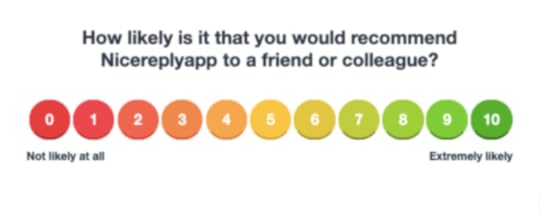
Example of NPS survey by Nicereply
Why is customer loyalty important?It may never have occurred to you that customer loyalty impacts all metrics of customer satisfaction. As we mentioned before, new customers are more expensive than those who already know your brand. It’s much easier to keep your existing customers happy than to convert a new one. Loyal customers are (not only) economically better for your business. The stronger your customer loyalty is, the faster you grow.
Why should your customer service team care about NPS?If there is someone who can notice a red flag of an unhappy customer, it’s your customer service manager. In customer service terminology, we recognize 3 groups of your customers. Based on their responses, there are:
DetractorsPassivesPromotersIf you want to maintain a high NPS, your main goal is to have as many promoters as possible.
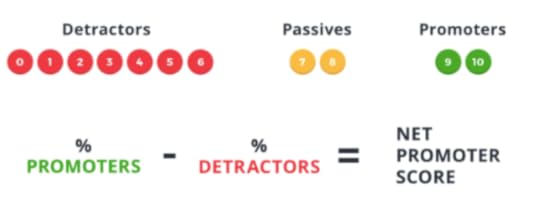
Find out what the average NPS is in your industry to help you determine whether your team is performing well. You may think you have a low score, but you are actually doing very well in your field.
NPS survey questions are always related to your brand. Opposite to CSAT, NPS focuses more on a long-term relationship or perception of your brand more than on current experience.
Usually, you might see NPS surveys with questions like:
“How likely is it that you would recommend XY company to a friend?”“How do you describe our product/service to your peers or team?”“What is the most important value you gain from our product/service?”“What do our competitors do better than we do?”
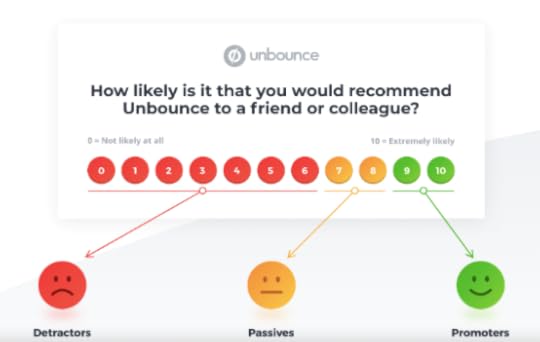
Lifetime value expresses the amount of money that customers spend on your brand. And it’s not a surprise that loyal customers are the ones who spend more with you over time.
To keep your customers as long as you can, make sure that you are working on these activities:
Make sure that your brand is attractive enough to your target group.Listen to the requests of your current customers, but also remember the wishes of customers that didn’t convert in the past.Keep an eye on your churn rate and do regular reviews to make sure it doesn’t exceed your strategic limit.Remember, collecting, analyzing, and interpreting data correctly is the key to maintaining customer loyalty. There are many tools that can help you with that.
How to choose a feedback tool for measuring NPS?There are many tools on the market that are dedicated to collecting customer feedback. Start with proper research, including these steps:
Look at reviews on the websites like Capterra, G2, or Trustpilot.Compare the pros and cons of each tool.If you still have some questions, talk to the customer success team of the company you are considering.The best way to find out if something works for you is by trying it! Create a free trial and see results.ConclusionWe can talk about the best practices in customer service for hours. No matter what field you want to build customer loyalty in, there is one element that always works. It is to consistently exceed customer expectations. Measuring your NPS is one of the best ways to do it, which is why your customer service team should care.
Simona Benetinová is a content manager from Nicereply. She enjoys everything related to marketing, the digital, and technologies.
 For more articles from Shep Hyken and his guest contributors go to customerserviceblog.com.
For more articles from Shep Hyken and his guest contributors go to customerserviceblog.com.
Read Shep’s latest Forbes article: The Choreography Of Customer Service
The post Guest Post: Why Should Your Customer Service Team Care About NPS? appeared first on Shep Hyken.
May 18, 2022
Answer the Question the Right Way
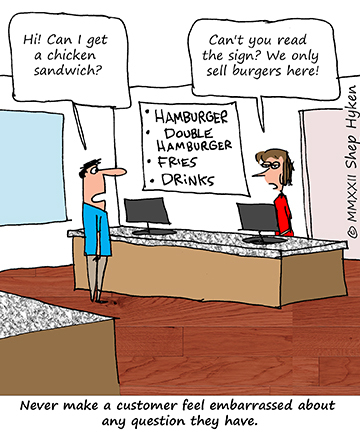 Sometimes a customer asks a question, and then either doesn’t understand or like the answer. And sometimes, it’s more than just a misunderstanding or a breakdown in communication. Maybe it’s because the employee doesn’t want to take the time to answer the question correctly. Or sometimes employees are asked the same question so many times that they get sick and tired of customers asking, and it shows in the way they respond and act.
Sometimes a customer asks a question, and then either doesn’t understand or like the answer. And sometimes, it’s more than just a misunderstanding or a breakdown in communication. Maybe it’s because the employee doesn’t want to take the time to answer the question correctly. Or sometimes employees are asked the same question so many times that they get sick and tired of customers asking, and it shows in the way they respond and act.
One of my favorite examples of this came from a Disney Institute class I attended several years ago. Our “teacher” told us that the No. 1 question guests asked the cast members – which is what employees are called at Disney – was, “Where is the bathroom?” The second most frequently asked question was, “What time does the 3 o’clock parade start?”
The bathroom one makes sense, but the parade question? Well, it turns out everyone knows what time the parade begins. But, what they really mean is what time does the parade pass by their current location. That said, the cast members are trained to enthusiastically answer either question as if it were the first time they ever were asked.
Why didn’t he say that in the first place?What made me think of this was when Angelica, one of our team members at Shepard Presentations, shared a customer service story about why she chose one coffee shop over another, even though it was more expensive. It wasn’t that the coffee was better. It was because the employees were better. Specifically, she chose not to go back to the less expensive shop because of the way an employee answered a question.
The menu said there were two types of cold brew, black and white. So, Angelica asked, “What’s the difference between the black and white cold brew?”
The employee flippantly answered, “The color.” Angelica then asked, “Does it taste different?”
The employee, who was obviously bored with the conversation, rolled his eyes and responded, “The black has no cream, and the white has cream.”
Angelica thought, “Why didn’t he say that in the first place?” Instead, he made her feel embarrassed for not knowing, and that’s the last time she went to that coffee shop.
The lesson is simple and reminds me of what I share in our customer service workshops: “No question is a dumb question.” Sometimes people don’t know what we think they should know. It’s okay. And no matter what question someone asks, we treat it as if it’s one of the most important questions we have ever been asked. We want the answer to be the right answer, answered in the right way that imparts knowledge and understanding, and creates confidence in whoever asked the question.
So, the next time someone asks you a question you’ve been asked “a thousand times,” answer it as if it’s the first time you’ve ever been asked.
Shep Hyken is a customer service expert, keynote speaker, and New York Times, bestselling business author. For information on The Customer Focus customer service training programs, go to www.thecustomerfocus.com. Follow on Twitter: @Hyken
customer service training programs, go to www.thecustomerfocus.com. Follow on Twitter: @Hyken
The post Answer the Question the Right Way appeared first on Shep Hyken.
May 17, 2022
Amazing Business Radio: Dan Cockerell
 Creating a Company Culture – The Disney Way
Creating a Company Culture – The Disney WayReinforcing Behaviors that Shape Your Organization’s Culture
Shep Hyken interviews Dan Cockerell, Walt Disney Company VP for 26 years and owner of Cockerell Consulting Group with his wife, Valerie. He is the author of How’s the Culture in Your Kingdom?: Lessons from a Disney Leadership Journey. He shares how a sustainable culture inspires loyalty from employees and customers.






 Top Takeaways:Culture can be defined as “How things are done around here.” It is based on your values, it defines what your best practices are, and how you hire people who are going to believe in that culture.Any organization can decide what its culture is and then start to go after it with intentionality. It is not a matter of cost; you can’t buy culture. It is a matter of will.Dan Cockerell shares how organizations can create the right culture that makes a long-term impact on employees and customers:Hire the right people. Look at the people in your companies who are superstars and figure out what makes them great. Then, find people who have the same fire and great attitude.Train them right. Set clear expectations from the beginning, starting from the interview and onboarding process. Your employees should understand why what they do is important in the overall customer experience.Treat them right. Treat employees with respect. Listen to them, equip them with the right tools, and help them when they need it. Recognize them when they do a great job so you can reinforce the good behaviors that bring a stronger culture.Quotes:
Top Takeaways:Culture can be defined as “How things are done around here.” It is based on your values, it defines what your best practices are, and how you hire people who are going to believe in that culture.Any organization can decide what its culture is and then start to go after it with intentionality. It is not a matter of cost; you can’t buy culture. It is a matter of will.Dan Cockerell shares how organizations can create the right culture that makes a long-term impact on employees and customers:Hire the right people. Look at the people in your companies who are superstars and figure out what makes them great. Then, find people who have the same fire and great attitude.Train them right. Set clear expectations from the beginning, starting from the interview and onboarding process. Your employees should understand why what they do is important in the overall customer experience.Treat them right. Treat employees with respect. Listen to them, equip them with the right tools, and help them when they need it. Recognize them when they do a great job so you can reinforce the good behaviors that bring a stronger culture.Quotes:“Culture is shaped by the behaviors that you reinforce.”
“Great companies have leaders who lift those around them up.”
“For organizations to be successful, there needs to be an emotional connection. People need to believe in what they do.”
“Money is not a long-term differentiator to keeping your employees happy. It is important because it helps you do things in life, but when it comes to human nature, people don’t perform for money. What they do every day gives them the purpose that will make them stay in your organization.”
About:Dan Cockerell is a retired 26-year Walt Disney Company VP who now owns Cockerell Consulting Group with his wife Valerie. He is the author of How’s the Culture in Your Kingdom?: Lessons from a Disney Leadership Journey.
Shep Hyken is a customer service and experience expert, New York Times bestselling author, award-winning keynote speaker, and your host of Amazing Business Radio.
This episode of Amazing Business Radio with Shep Hyken answers the following questions … and more:
How do you define company culture?What shapes your company’s culture?How do you create and maintain company culture?What motivates employees to stay at a company?How do you improve employee loyalty?The post Amazing Business Radio: Dan Cockerell appeared first on Shep Hyken.



